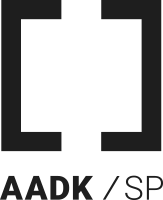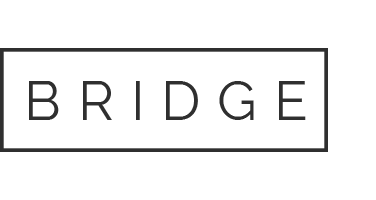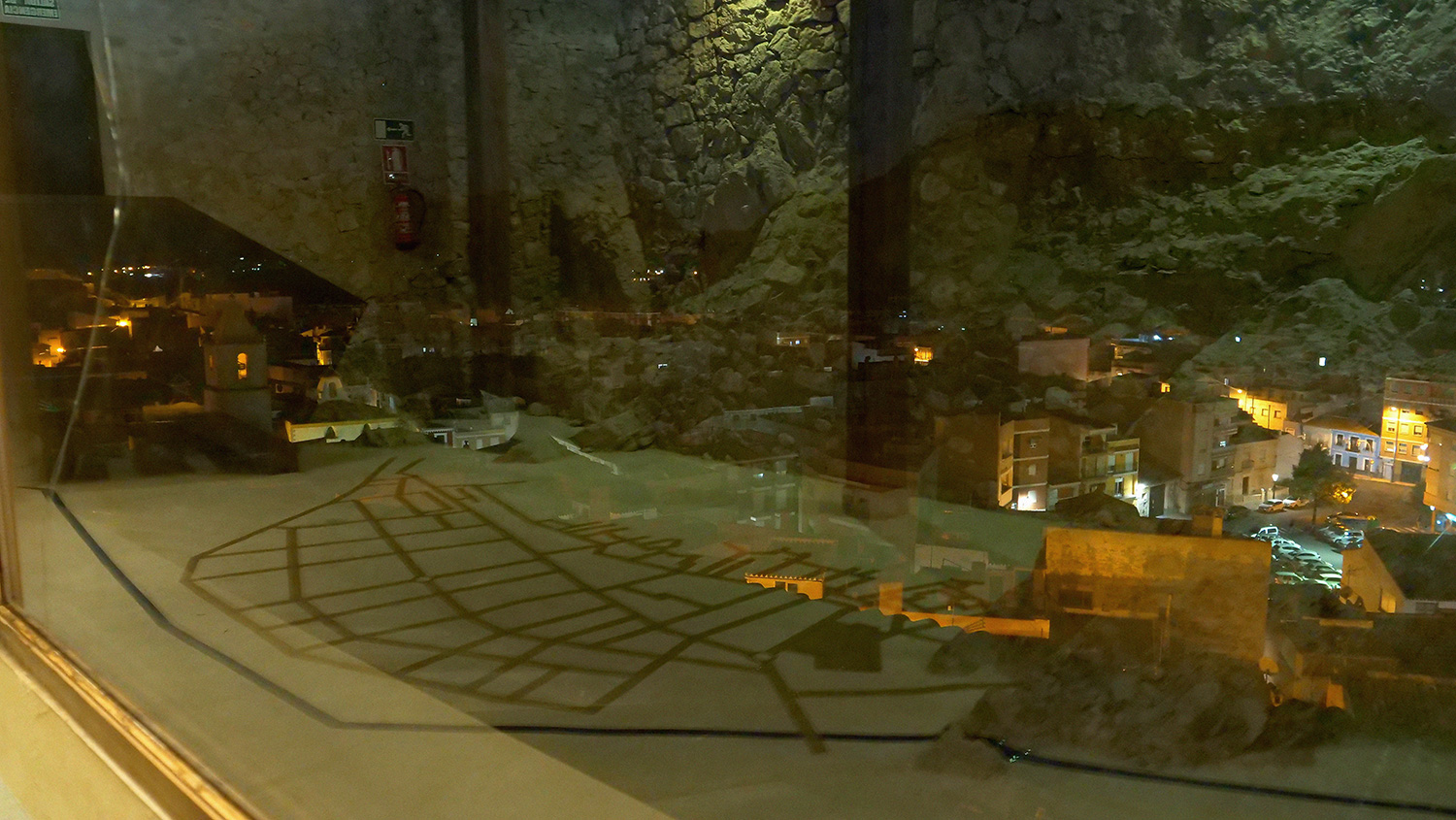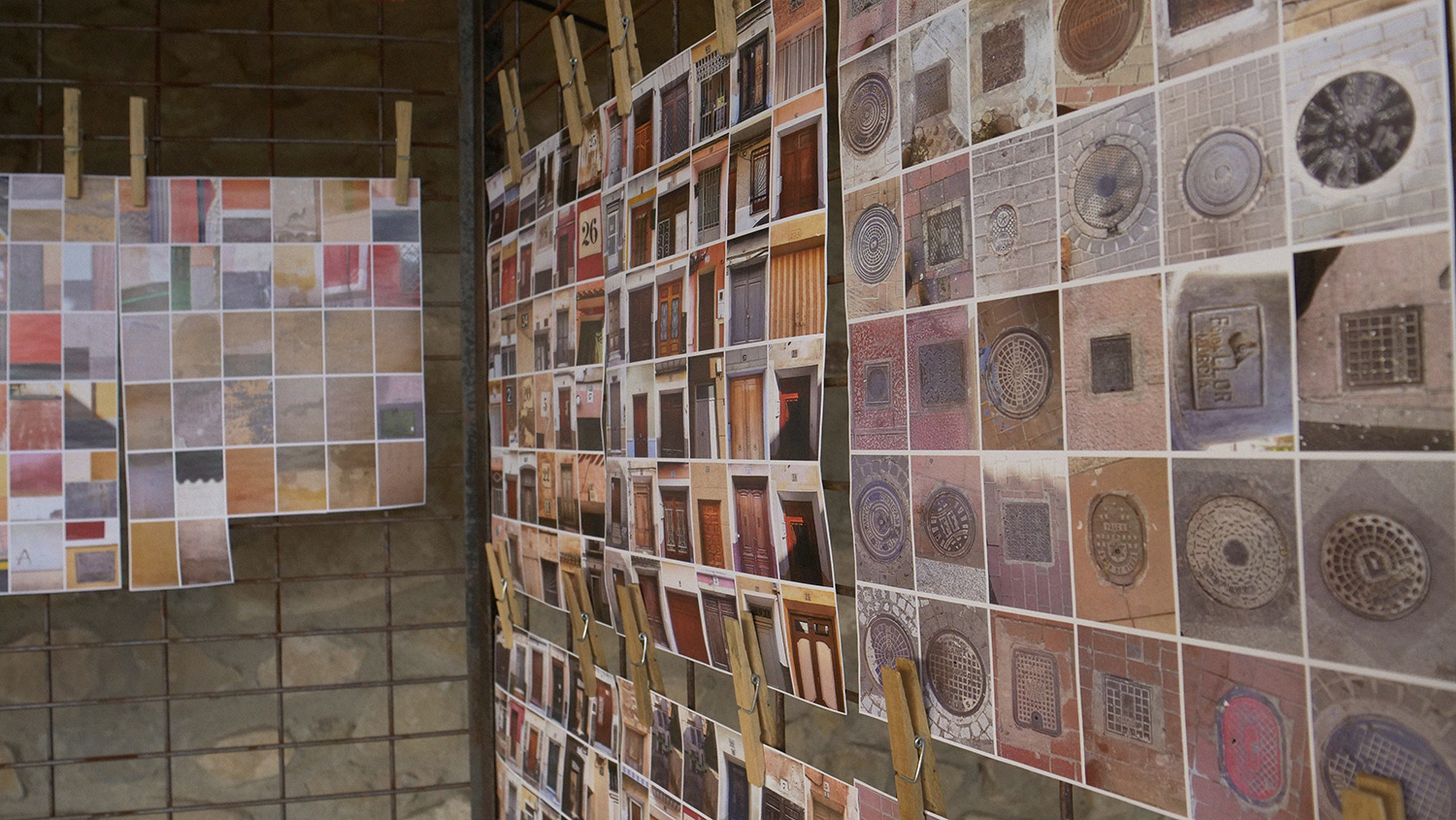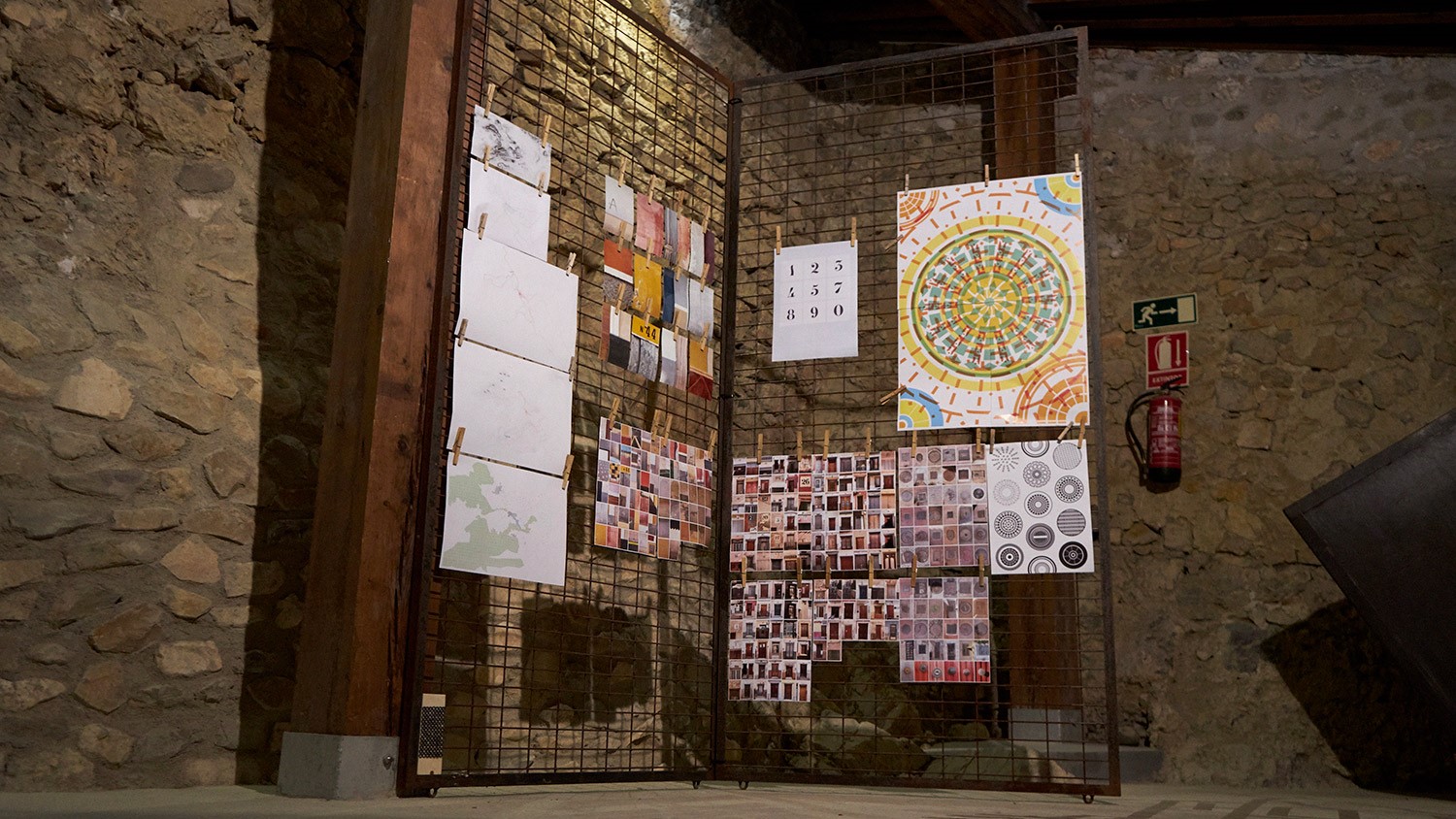
28 Feb Minna Öberg
Period of residency: January-February 2019
Residency realised in collaboration with Edward Johansson
Web
January 2019
Map marking
In their first month of residency, Minna and Edward have been investigating the ways in which we discover, understand, internalise and then represent a territory. They have been experimenting with various approaches, such as sketching subjective maps based on their walks around Blanca and retracing their routes using different apps.
Driven by the question; “What is there to map?”, they were interested in the different layers that shape our comprehension of a place beyond objective special characteristics, such as frequency, history, social encounters or colours. Once they had identified some of these factors, they explored ways of translating these into a visual representation.
In their process two different perspectives are revealed. Edward has a more extrinsic approach, interested in the complexity of the map and representation on a bigger scale, including investigating through technology. Meanwhile Minna involves herself with a closer view, diving into the details and extracting possible deeper layers of representations of a particular place.
At this month’s open studio they invite visitors to take part in this process. By marking locations and routes on the blank map of Blanca, participants can contribute with their own perspective on three topics marked by different colours. In this way a map of shared subjectivities is created, giving us a deeper insight into the imaginaries of people connected to Blanca.
Residency supported by a travelling grant by Ålands Kulturdelegation.
February 2019
The process of Minna and Edward had as a starting point the question that they were driven by in the previous month: ‘What is there to map?’. Though their projects became more distant from each other in their second month of residency, they still have as a common axis the urge to investigate the different layers through which we perceive and internalise territory, and the possible ways in which this subjective understanding can be translated into visual representations. Minna’s and Edward’s works offer the viewers several enchanting lenses through which to look at their surroundings.
Minna dives into subtle details and incorporates these into a more complex body of work. The zoomed-in street segments are derived from the artists’ project for the previous month’s open studio. These images are created by different layers of dust: some surfaces are preserved by tape and keep their lighter shade, meanwhile others are coloured by dirt. Next to these we can see the map of Blanca, built of stones collected throughout the artists’ hikes during their stay. This map is the final one of many made through a process in which Minna, using the same stones, built the maps of cities alongside the river Segura.
Edward’s process combines a distant perspective with a zoomed in, detail-focused one. His work is very systematic and organised in it’s methodology, meanwhile the subjects of his investigation reveal a cheery, playful approach. This month, besides his studies in data visualisation through mapping, he was experimenting with the colour palette of the town, creating a colour matrix of the buildings of Blanca. During his walks Edward also collected street numbers, trying to solve the mystery of the missing eight – or observing what is there instead.
The curves drawn on the windows represent a meeting point between the two artistic approaches. Here, giving instructions to each other, the artists created outlines of the landscape from different viewpoints, by this also inviting the visitors to look at Blanca from a shifted perspective.
Residency supported by a travelling grant by Ålands Kulturdelegation.
